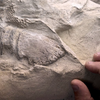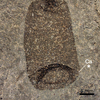Scientists Find Evidence of a Real-Life Tatooine!

An artist's depiction of the binary brown-dwarf system
Post Author- Ellis Nolan
Probably the most recognizable landscape in the Star Wars universe is Tatooine, Luke Skywalker’s desolate home planet, where his fate finds him in the form of two crash-landing rebellion droids. Twin suns illuminate the desert wasteland, and in a recent discovery right out of George Lucas’s scripts, scientists believe they have found a planet similar to the one Skywalker begrudgingly calls home.
In a galaxy far, far away (around 120 light years from Earth, to be exact), researchers have found evidence of a planet orbiting two brown dwarfs, sometimes known as “failed stars.” This is because they lack the mass to fuse hydrogen, unlike stars like the Sun, but still emit light and heat from fusing deuterium, unlike gas giants such as Jupiter, in which no fusion is present.
Scientists recently noticed that the orbit of the two failed stars is changing, which would be unlikely to occur if their system was limited to the two objects. This led them to hypothesize that a third mass, a planet, must exist in the system. While it still hasn’t been directly observed, scientists already know of more than a dozen exoplanets that follow a multi-star orbit. They are quite rare, and more research is needed to confirm their existence, as well as whether it is inhabited by Banthas and Tusken Raiders.
Want to have your own piece of Tatooine? Check out our Krayt Dragon specimen here, a screen-used Star Wars Prop!
Featured Product
Joe Frazier Boxing Glove
Cool Things!

Is “Paul is Dead” Dead?: Unpacking One Of Pop Culture’s Most Enduring Conspiracy Theories

Scientists Discover Hooves and Skin in Preserved Dinosaur "Mummies!"
A dinosaur discovery just in time for Halloween! In a new analysis of a group of fossils from Wyoming, Scientists have determined this group of fossils are dinosaur “mummies,” with preserved skin and even hooves.

Scientists Record a Bat Catching Birds Mid-Flight!
Bats, birds, screeches, oh my! In a reverse-Hitchcock twist, a new study reveals that a species of European bat catches and eats birds mid-flight.
Specimen Deep Dives

The House that Ruth Built: The Story of the Old Yankee Stadium

The Queen of the Skies: the Story of the Boeing 747

Old Ironsides: The USS Constitution and the Start of the U.S. Navy
Long Form Articles

The Artist Behind the Macintosh: Susan Kare and Apple Computers
While the two Steves, Jobs and Wozniak, are the most well known faces behind Apple computers, equally important to the products and culture of the company were those who crafted the experience of using their computers through design. The most notable of these visual architects was Susan Kare, a designer responsible for “humanizing” Macintosh computers.

Can I Lick It? Yes You Can!
Have you ever been unable to tell if a fossil was really a fossil, but you were too embarrassed to admit it? Have you ever wanted to lick a fossil just because, but you didn’t want to risk judgment from your peers? Well, good news! You can kill two birds with one stone! Licking a fossil can actually help you determine if it’s the real deal or just another rock.

Is It Legal To Own a Meteorite: How to Start Your Outer Space Collection!
Meteorites are some of the rarest geological specimens to be found on Earth. Of course, since these stones are not of our world, purchasing them can sometimes be a confusing process. Is it legal to own a meteorite? In short, yes! Read on for help starting your cosmic collection!

















